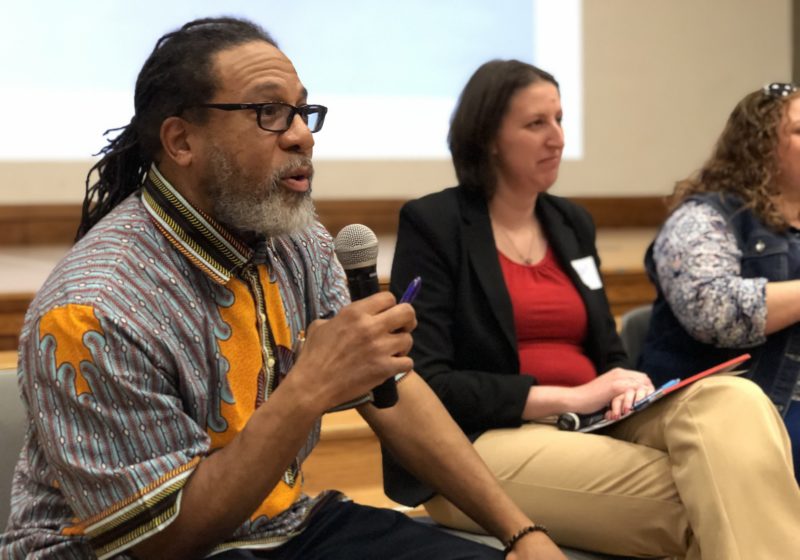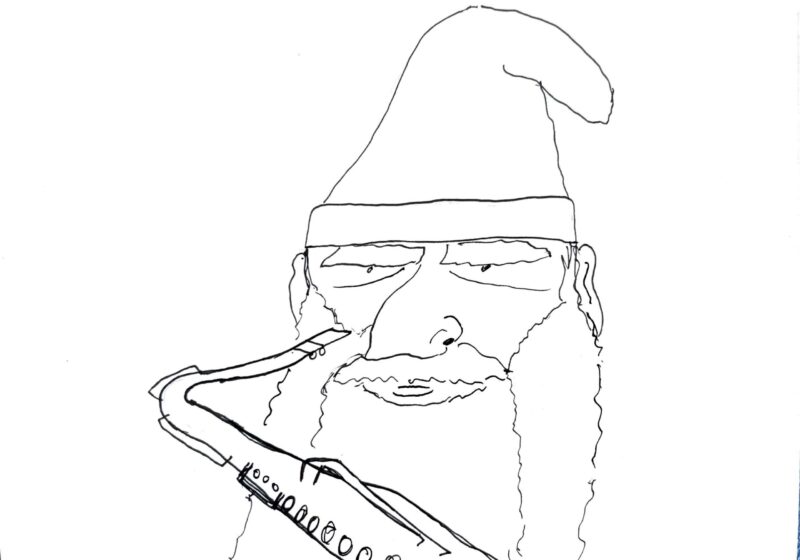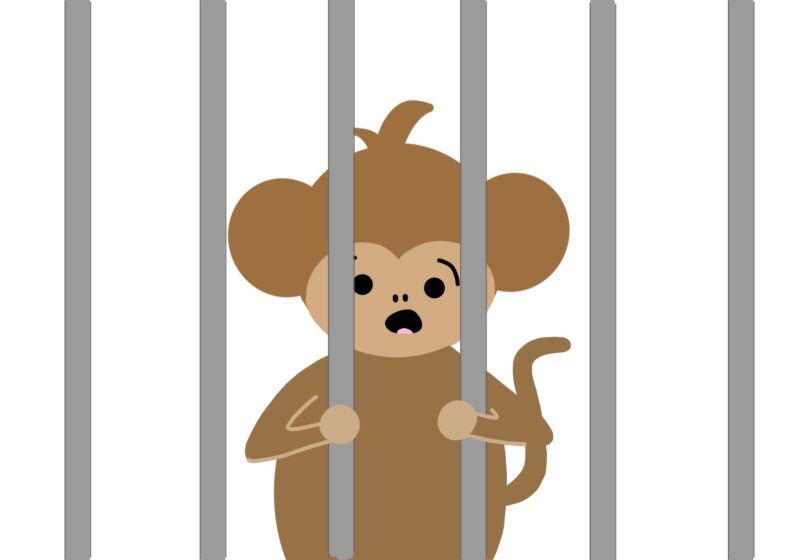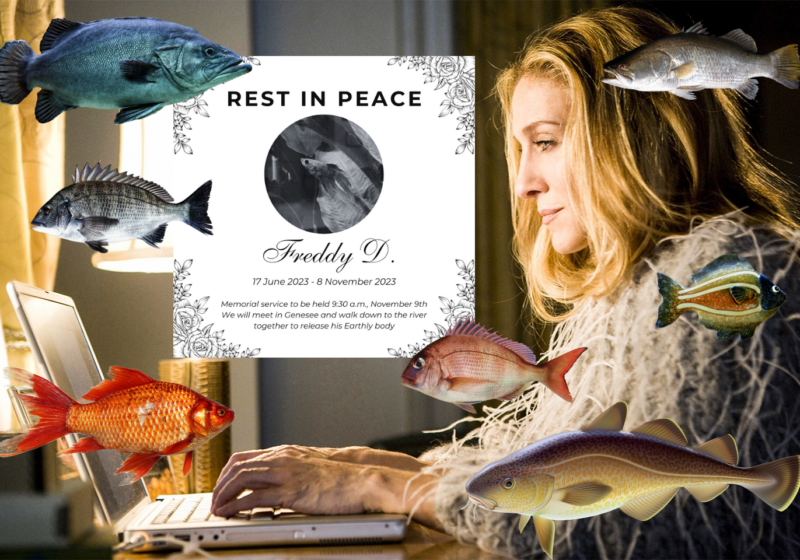Evelyne Leblanc-Roberge, who teaches art and art history, believes her 33 portraits of blue-gray skies will remind people of how infinite and open the heavens are.
In reality, the images depict the sky above 33 prisons, jails and detention centers within a two-hour drive of Rochester, for whose inhabitants the sky has “become another wall.”
Leblanc-Roberge exhibited her work, “The Only Thing I Can See is the Sky,” at the decarceration symposium on Friday, where several researchers and community organizers convened to explore the pervasive and oft-invisible effects of mass incarceration on Rochester.
Leblanc-Roberge is a member of the Rochester Decarceration Initiative, which organized the symposium. Their mission is to study and transform Rochester’s criminal justice system.
“If Frederick Douglass were alive today, we think that [he] would be trying to take on mass incarceration, and decarcerate the city of Rochester,” UR religion professor and Initiative member Joshua Dubler said in his opening remarks.
Initiative members have also been vocal about their desire to decarcerate the UR campus, which anthropology professor Kristin Doughty says could take many forms, such as “inviting formerly incarcerated people onto campus as students and as employees,” and in general, “rethinking the relationship between the University and the city.”
The exhibitions approached decarceration from diverse perspectives. Associate professor of counseling Dena Phillips Swanson looked at the long-term effect of how school discipline methods can put children — particularly black and Latino youth — at greater risk of entering the justice system later on.
Attendees could also peruse ethnographic reports by UR students on how prisons shape life in Rochester, produced in a class co-taught by Dubler and Doughty.
Despite their research, the organizers acknowledged there was still much they didn’t know.
“That is where you all come in,” Dubler said. The symposium, according to the organizers, was designed to be an opportunity for researchers to learn from the activists and organizers in Rochester.
“What we really want is to hear from members of the community that are doing this work on how we can partner with them,” Dubler said.
To this end, the two panel discussions were comprised entirely of community members — first to talk about supporting incarcerated persons upon release, and second to talk about building a Rochester without prisons.
The first set of panelists highlighted the importance of changing the mindsets of formerly-incarcerated people to help them reintegrate to society.
“Once I began to think differently and try something different, different [things] began to happen for me,” community advocate Rochelle Curtis said.
She has previously been incarcerated, and now supports others affected by the criminal justice system. “You’ve got to be willing to flip everything that you’re accustomed to,” she said.
At the same time, panelist Sarah Lee — who works with women in the criminal justice system — highlighted barriers that can prevent successful transition from happening, such as stringent and inflexible rules for parolees.
Sarah Fletcher from the Center for Employment Opportunity echoed Lee, citing the example of one of her program participants, who had to return to jail for four months because he arrived home 20 minutes past curfew.
“He lost his apartment,” Fletcher said. “He certainly lost any job that we had helped him get […] he’s staying in a hotel room because while he was gone […] people stole everything out of his apartment.”
For community activist Jerome Underwood, the key to eliminating these difficulties is empathy and compassion.
“We have enough data,” Underwood said. “Question is, is [it] a problem for anybody? Because if you don’t mind, it don’t matter.”
First-year Catherine Ramsey, who choreographed the event’s dance performance, admired Underwood’s commitment to changing people.
“He was so willing to […] enlighten them of what they’ve been taught, and how wrong it is,” she said.
In her dance, Ramsey strove to do the same. She chose to dress the dancers in green to symbolize the labor of prisoners and how the rest of society benefits from that industry.
“I think a lot of people are aware of it but they don’t necessarily identify it as a problem,” Ramsey said.
The dance ended with an action call.
“At the end when they walk off, I wanted them to look at the audience and [convey]: ‘yes, this is the problem,” she said. “‘You can fix it […] Now you have no excuse.’”





